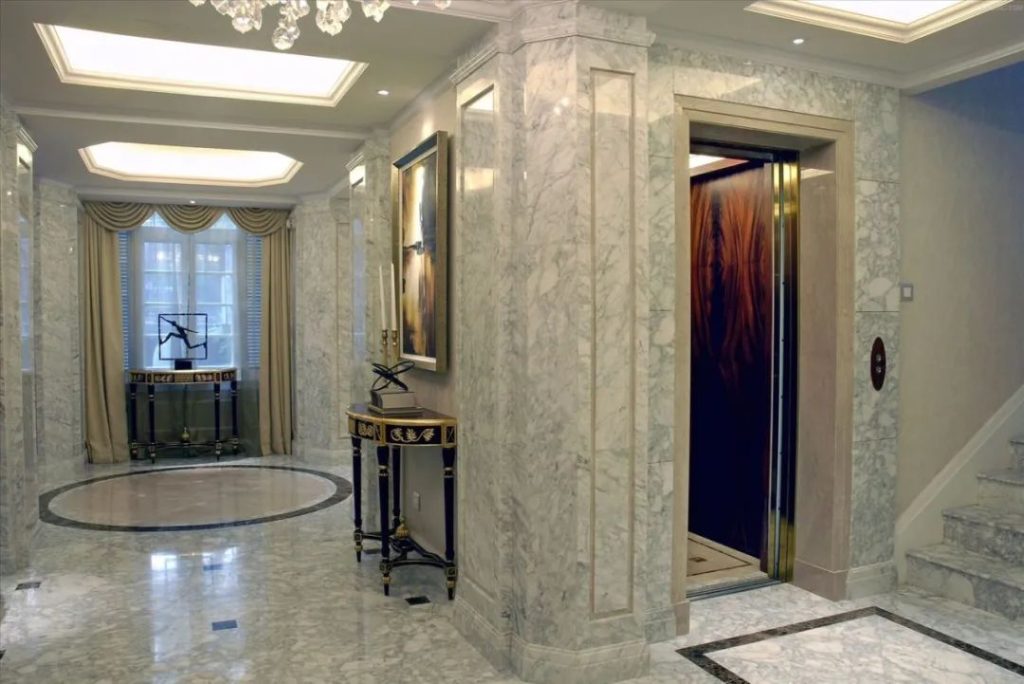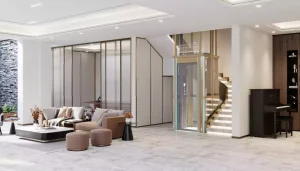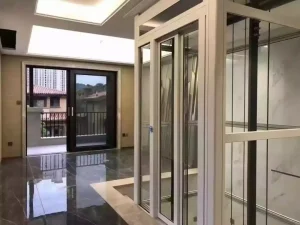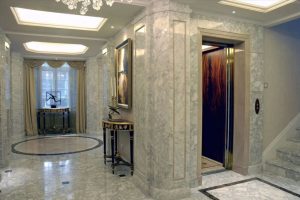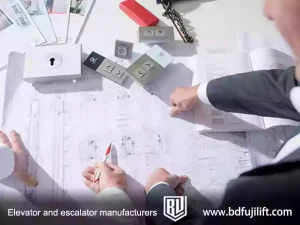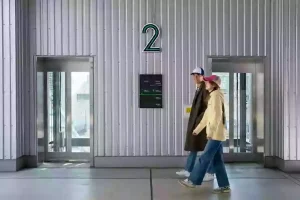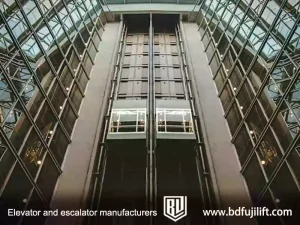Passenger elevators are common vertical transportation equipment in high-rise buildings. Due to the complexity of their mechanical and electrical systems, various faults may occur.
1. Mechanical system failure
Mechanical system failure is a common type of passenger elevator failure. They may cause the elevator to fail to operate normally or become stuck. The following are some common passenger elevator mechanical system failures and their troubleshooting methods:
Poor lubrication or lubrication system failure
- Phenomenon: The rotating parts of the components are severely heated and worn or the shaft is stuck, resulting in damage to the parts of the rolling or sliding parts.
- Troubleshooting method: Regularly check and maintain the lubrication system to ensure that all parts are properly lubricated.
Parts wear and aging
- Phenomenon: Due to the frequent use of elevators, some parts are worn and aged, and the worn parts are not replaced or repaired in time, causing further damage.
- Troubleshooting method: Carry out daily inspection and maintenance, check and find the degree of wear and wear of the relevant parts in the transmission, rolling and sliding parts of the parts in time, and repair them according to the degree of wear.
Loose or loose fastening bolts
- Phenomenon: During the operation of the elevator, some fastening screws are loose or loose due to vibration, causing some parts, especially the moving parts, to work abnormally.
- Troubleshooting: Check fasteners regularly to ensure that all bolts are tightened in place to avoid displacement or damage of components due to looseness.
- Balance coefficient is out of adjustment or seriously overloaded
Phenomenon: It causes large vibration of the car or poor leveling accuracy, the elevator speed is out of control, and even rushes to the top or squats to the bottom.
Troubleshooting: Adjust the elevator balance coefficient to ensure that it does not exceed the standard value and avoid overload operation.
Severe wear of guide shoes
- Phenomenon: It causes abnormal noise and vibration during elevator operation.
Troubleshooting: Replace the guide shoe bearing or guide shoe lining.
Poor lubrication of guide rails
- Phenomenon: It causes abnormal noise and vibration during elevator operation.
- Troubleshooting: Lubricate the guide rails regularly to ensure smooth operation.
Excessive fatigue of wire rope
- Phenomenon: It may cause unstable operation or sudden stop of the elevator.
- Troubleshooting: Check the wear of the wire rope regularly and replace the wire rope if necessary.
Abnormal sharp noise at the traction machine and brake
- Phenomenon: It may be due to dryness and lack of oil at the bearing or foreign matter at the bearing, or the bearing is damaged.
Troubleshooting: Check and add lubricating oil, clean foreign objects, and replace bearings if necessary.
2. Failure of the electrical control system
The passenger elevator electrical control system is a key part of the normal operation of the elevator. It is responsible for managing elevator signals, safety signals, speed signals, command signals, and position signals to ensure the safety and stable operation of the elevator. The following are some common elevator electrical control system failures and their troubleshooting methods:
Electrical component insulation failure
Due to problems such as moisture and aging of elevator electrical components during frequent operation, insulation breakdown or operation failure may occur, causing short circuits or open circuits, which in turn lead to serious elevator safety accidents.
Troubleshooting: Check the insulation status of electrical components regularly and replace damp or aged components in time.
Electrical safety circuit failure
Safety circuit failure may be a factual failure or a false operation failure. A factual failure refers to a real failure. A false operation failure may be caused by incorrect installation position or unreliable protection components.
Troubleshooting: Comprehensively check each part of the safety circuit to ensure that all safety switches are working properly, without voltage input and coil burnout.
Poor contact
The failure of the door system is mainly manifested in the poor contact of the contacts of various electrical components, which may be caused by the quality of components, installation and adjustment quality, maintenance quality, etc.
Troubleshooting method: Check and clean the contacts to ensure good contact, and replace components if necessary.
Command call button and signal light failure
Command call button failures are usually more common than signal light failures, mainly due to more external factors, such as poor lubrication, lubrication system failure, elevator balance imbalance, etc.
Troubleshooting method: Check the lubrication system to ensure good lubrication status; check the balance system to avoid overload operation.
Relay and contactor failure in the machine room
Relay aging and necrosis and contactor failure are common problems.
Troubleshooting method: Check the working status of relays and contactors regularly, and replace damaged parts in time.
Line failure
Including open circuit, short circuit, poor wiring and signal interference.
Troubleshooting method: Check the line connection to ensure that there is no short circuit and open circuit phenomenon, and eliminate signal interference.
Signal interference failure
Electromagnetic interference may cause the elevator control system to freeze instantly.
Troubleshooting method: Check the power supply and communication equipment to reduce electromagnetic interference.
Current failure
A large current is generated in the control cabinet, which may burn the contactor and affect the operation of the elevator system.
Troubleshooting method: Check the current in the control cabinet to ensure that the current is within the safe range.
Power failure
Involving the control safety circuit, main control circuit, etc., the failure may occur due to different power types and sizes.
Troubleshooting method: Check whether the power supply of each control circuit is installed correctly to ensure that the power supply is stable.
Safety circuit failure
Safety circuit failures include broken and missing detection switches, no voltage input and coil burnout.
Troubleshooting method: Check the integrity of the safety circuit to ensure that all detection switches are working properly.
3. Passenger elevator failures and general troubleshooting methods
Passenger elevator failures may involve multiple aspects such as machinery, electrical control systems, and use environment. The following are some common passenger elevator failures and their general troubleshooting methods:
Elevator cannot start
- Causes of failure: power supply problems, control cabinet failures, door lock circuit problems, overload, etc.
- Troubleshooting: Check whether the power supply line and fuse are normal; Check whether the contactor and relay in the control cabinet are working properly; Ensure that the door lock circuit is complete and not accidentally disconnected; Check whether there is overload and reduce the load.
The elevator cannot stop at the designated floor
- Cause of failure: floor sensor damage, control system failure, foreign matter on the track, etc.
- Troubleshooting: Check whether the floor sensor is damaged and replace it if necessary; Check whether the control system is working properly; Clean foreign matter on the track.
Elevator door opening and closing failure
- Cause of failure: door machine failure, door track blockage, door lock failure, etc.
- Troubleshooting: Check whether the door machine is powered normally and whether the motor is damaged; Clean the door track to ensure that the door can be opened and closed smoothly; Check whether the door lock is working properly.
The elevator shakes or makes a lot of noise during operation
- Cause of failure: non-parallel guide rails, worn bearings, uneven traction rope tension, etc.
- Troubleshooting: Adjust the guide rails to make them parallel; Replace worn bearings; Adjust the tension of the traction rope.
The elevator does not start due to overload
- Cause of failure: overload device failure.
- Troubleshooting: Check whether the overload device is working properly and replace it if necessary.
Elevator stops suddenly
- Causes of failure: emergency stop switch action, safety clamp action, control system failure, etc.
- Troubleshooting: Check whether the emergency stop switch is malfunctioning; Check whether the safety clamp is actuated due to overspeed; Check whether the control system is faulty.
Elevator does not respond to call
- Causes of failure: call button failure, control system failure, communication line problem, etc.
- Troubleshooting: Check whether the call button is damaged; Check whether the control system is normal; Check whether the communication line is unobstructed.
Elevator leveling is inaccurate
- Causes of failure: leveling sensor failure, improper control system parameter setting, etc.
- Troubleshooting: Check whether the leveling sensor is working properly; Adjust the control system parameters.
Elevator running speed is abnormal
- Causes of failure: motor failure, improper control system parameter setting, etc.
- Troubleshooting: Check whether the motor is normal; Adjust the control system parameters.
Elevator safety device frequently operates
- Causes of failure: safety device sensitivity is too high, mechanical parts are worn, etc.
- Troubleshooting: Adjust the sensitivity of the safety device; Check and replace worn parts.
Safety is the most important consideration when dealing with passenger elevator malfunctions. Non-professionals should not attempt to repair the elevator themselves without professional training and qualifications. Troubleshooting of elevator malfunctions should be carried out by professional elevator maintenance personnel to ensure the safety of personnel and the normal operation of the equipment. If you encounter an elevator malfunction, you should contact a professional elevator maintenance service immediately.


